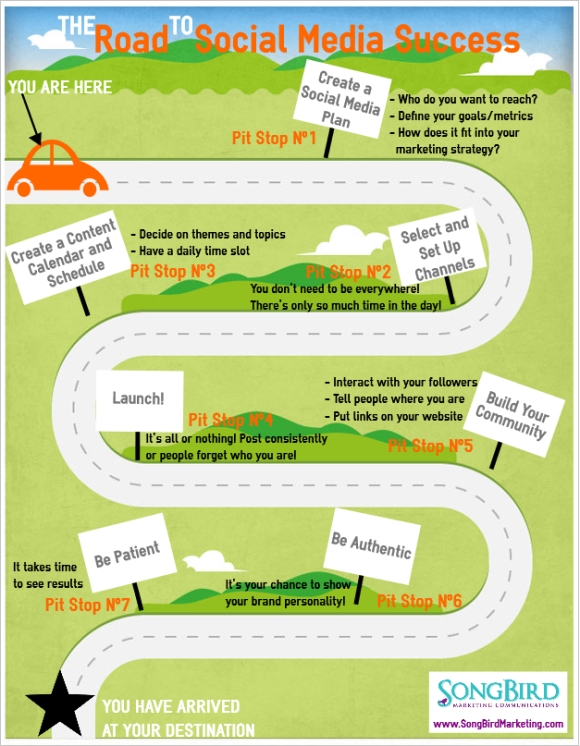 It’s one of the first requests I get from clients: “I want to be in the media.” Now, that can mean a lot of things. It can mean:
It’s one of the first requests I get from clients: “I want to be in the media.” Now, that can mean a lot of things. It can mean:
- You want your product featured in print or in a segment on TV or radio
- You would like to be quoted as an expert in an article from a journalist who is covering a topic that you know a lot about
- You would like to be featured as an expert on broadcast media
- You are doing some sort of public stunt or event and you would like live broadcast coverage
- You would like to publish a guest column, or bylined article
Let’s talk about the last one, what it takes to publish a bylined article. Here are a few tips you should be aware of if your goal is to have a bylined article published in the media (print or digital).
#1: Why do you want to be in the media and how does it fit within your overall marketing and PR strategy. What you have to say should positively affect either your company’s brand or your personal brand, or both. When executed properly, and not in a vacuum, a published bylined article can add a lot to your strategy when it comes to building awareness through credibility by establishing yourself and your brand as a leading expert in your field.
#2: Identify what you have to say and add value for the reader. This is key to making you and/or your company stand out. It’s time to pull from all that work you did when you identified your key differentiators in your business plan! Whether you are giving a list of tips or a problem/solution-based message, there should be key takeaways identified for your target audience, including quality data wherever possible.
out. It’s time to pull from all that work you did when you identified your key differentiators in your business plan! Whether you are giving a list of tips or a problem/solution-based message, there should be key takeaways identified for your target audience, including quality data wherever possible.
#3: Identify your target publications. You should select target publications that you know your target audience will read. Make sure you familiarize yourself with their contributor policies (including how you can promote it after publication). You can usually find this on the website, or you can contact the editor.
#4: Know the audience. You should know the publication well enough to match the writing style while remaining in your own voice. For example, if you are writing for a business publication that is extremely factual and serious, you likely wouldn’t start your article off with a light-hearted joke.
#5: This is not a promotional piece. If your article is just a long-winded sales pitch, chances are it will be turned down.  Take the opportunity to showcase your knowledge rather than what you do. It is more a “thought leadership” piece (full disclosure: that term is way overused, and I am using it only as a descriptor).
Take the opportunity to showcase your knowledge rather than what you do. It is more a “thought leadership” piece (full disclosure: that term is way overused, and I am using it only as a descriptor).
#6: Break up the text. Using subheadings or bulleted lists within the article will allow your readers to easily organize the information you are giving them. It’s also a great way to clarify the main points of your article.
#7: Design the perfect byline. This will depend on the publication, but if you can, include your website and contact information. If not, generally, you will be able to at least include your Twitter handle. Find a way to descriptively identify what it is you do and how you can add value for potential clients without being salesy.
 #8: Don’t be boring. Yes, easier said than done. However, if you feel like you are watching paint dry when you are reading through your article, chances are your readers will also feel the same way. Make sure you add a bit of personality in there so readers can get a good sense of where you stand on the topic.
#8: Don’t be boring. Yes, easier said than done. However, if you feel like you are watching paint dry when you are reading through your article, chances are your readers will also feel the same way. Make sure you add a bit of personality in there so readers can get a good sense of where you stand on the topic.
#9: Proofread. I can’t stress this enough. In fact, you should likely have someone else proofread it for you as well. An extra set of eyes never hurt anyone. You want to make sure you put your best foot forward when it comes to reaching out to media.
#10: Make sure you have a follow up game plan. Ok, so you’re published, now what? Yes, you can share it around, and you should, however, what are you going to do to build on this initial profile-building tactic that you have executed?
Bonus Tip: Use a third party. There is no shame in having someone help you out by drafting your byline articles. Sometimes, time constraints of business ownership get in the way, or perhaps writing really isn’t your strong-suit. The key is finding someone who takes the time to get to know you and how you tick, and someone who is not afraid to take the anonymous back seat to your success once the article gets high acclaim. After all, it is your thoughts that are going in, someone just helped you put those thoughts on paper.

 #1 Prioritization: Controlled Procrastination
#1 Prioritization: Controlled Procrastination






 Marketing and PR are forms of art, they aren’t an exact science. You have to constantly feel out each situation and stay on top of who your customers are and what they need (check out
Marketing and PR are forms of art, they aren’t an exact science. You have to constantly feel out each situation and stay on top of who your customers are and what they need (check out 
 So many people have dreams of starting their own business. The first step is deciding you are going to do it… And taking the plunge by leaving your current job and steady paycheck. This part can be a bit scary, but if you
So many people have dreams of starting their own business. The first step is deciding you are going to do it… And taking the plunge by leaving your current job and steady paycheck. This part can be a bit scary, but if you 

 So many business leaders compartmentalize marketing into silos. This happens for a number of reasons. Maybe you have a large corporation, some people think it is easier to look at things in separate pieces, and others don’t understand the power that marketing can have, they just see it as a necessary function of business because that is what they were taught.
So many business leaders compartmentalize marketing into silos. This happens for a number of reasons. Maybe you have a large corporation, some people think it is easier to look at things in separate pieces, and others don’t understand the power that marketing can have, they just see it as a necessary function of business because that is what they were taught. We hear so many people talking about launching a “provocative marketing & PR campaign”, but what does that really mean? Contrary to popular belief, it’s not just about sex, It’s not just about raising eyebrows, and it definitely does not mean being blatantly offensive. The key is to make your audience sit up and take notice and invest in your brand emotionally. A provocative marketing and PR campaign means you are generating creative and thought-provoking content.
We hear so many people talking about launching a “provocative marketing & PR campaign”, but what does that really mean? Contrary to popular belief, it’s not just about sex, It’s not just about raising eyebrows, and it definitely does not mean being blatantly offensive. The key is to make your audience sit up and take notice and invest in your brand emotionally. A provocative marketing and PR campaign means you are generating creative and thought-provoking content.
 Having worked both with industry pros who have been in business for over 15 years as well as the new generation of marketing and PR professionals, I have been privy to the difference in approach that both brings to the table. When creating a Marketing and PR strategy, it is important to integrate both approaches to get the most out of your efforts.
Having worked both with industry pros who have been in business for over 15 years as well as the new generation of marketing and PR professionals, I have been privy to the difference in approach that both brings to the table. When creating a Marketing and PR strategy, it is important to integrate both approaches to get the most out of your efforts.
 rules to live by as you approach your Marketing & PR strategy both from an Old School and a New School perspective:
rules to live by as you approach your Marketing & PR strategy both from an Old School and a New School perspective: